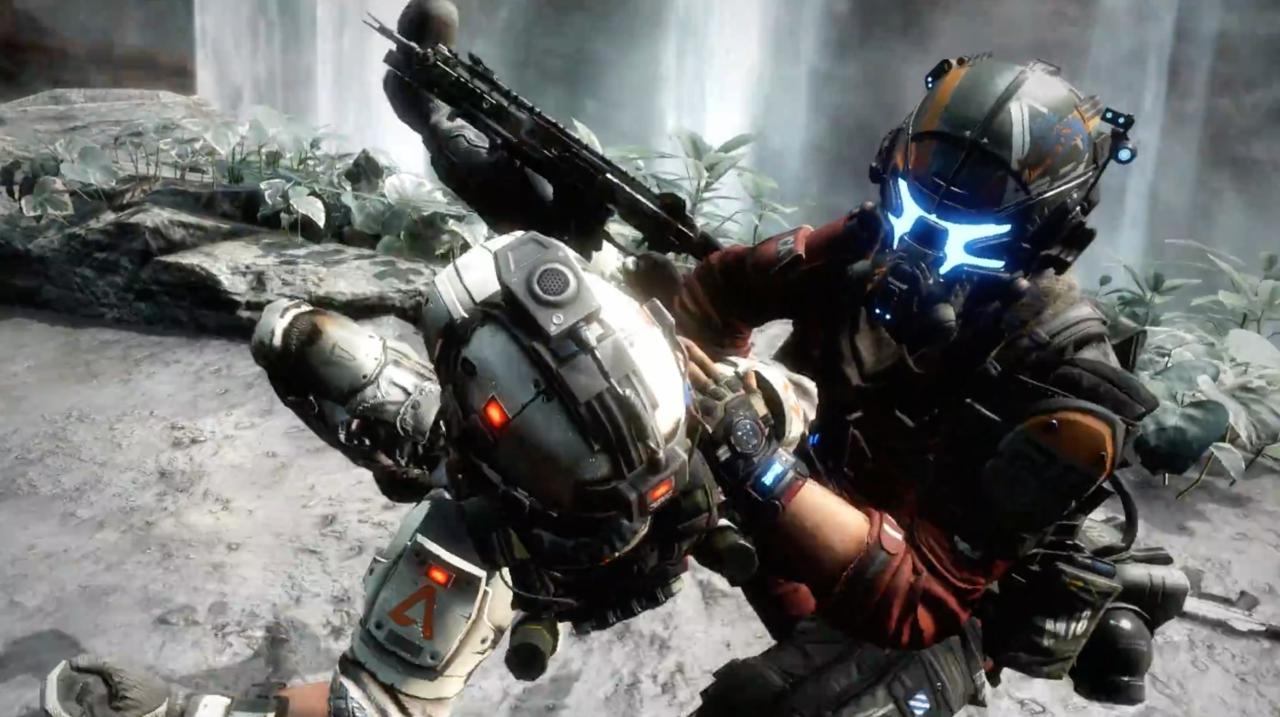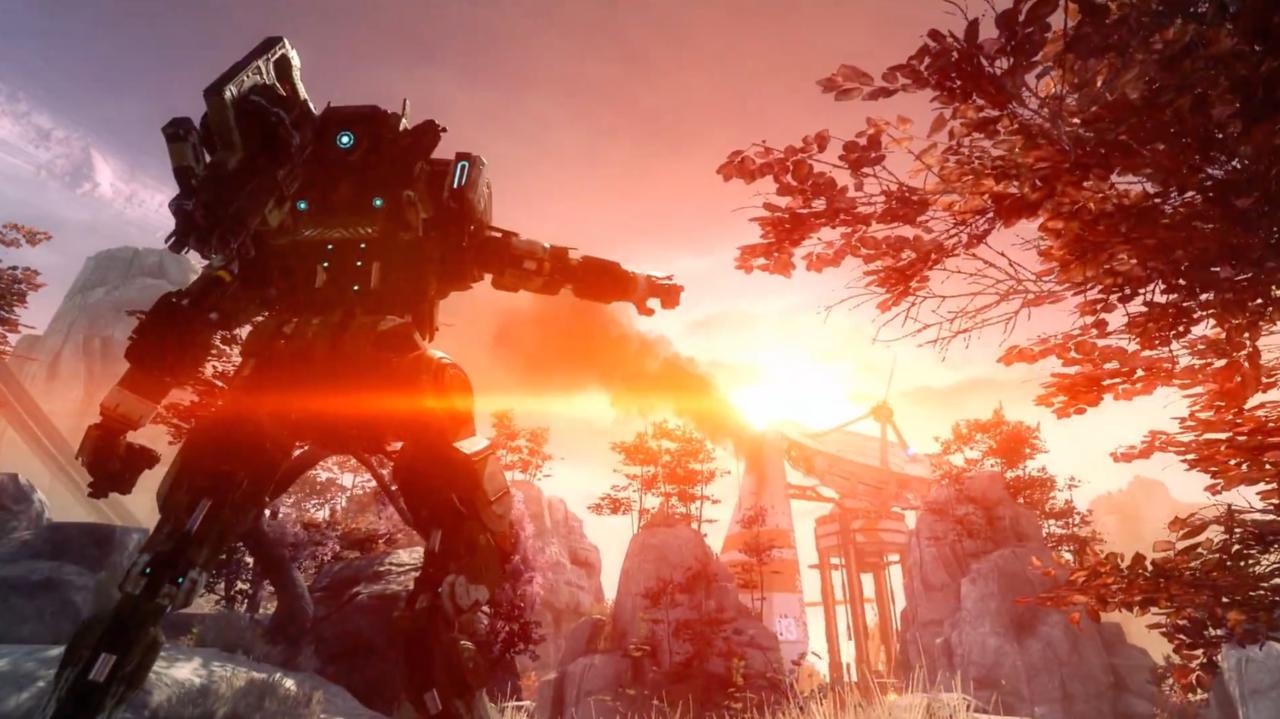Titanfall is a fluid game--wall running flows into double jumps; double jumps lead to ledge grabs; ledge grabs vault you over rooftops, through windows, around tight corridors, and into the titular mechanical behemoths. In Titanfall 2, though, this flow is taking on a different pace.
"Titanfall games were turned up to 11 the whole time," producer Drew McCoy says. "With Titanfall 2, we want to have more variation in pace. We don't want each match to the feel the same as the last."
Developer Respawn Entertainment is fueling this new tempo with six new Titan classes. As opposed to the three mech types of the first game--which are all absent from the sequel--the new robots have much less conventional abilities to lean on. In fact, these new mammoths and their pilots border on having super powers: miniature black hole grenades, protective energy shields, and shoulder-mounted laser cannons. And while these abilities all play their part in the unfolding spectacle of each match, they also lend subtle tweaks to the Titanfall formula.
That is, they lend a visual vocabulary to firefights that reflect the forethought and strategy of fighting games. You learn each titan class. You learn their abilities. You learn how best to counter each attack--when to raise your shield, when to run, and when to respond with an aggressive counter blow.

"When you see someone down the street, you immediately get a 'flash read,'" Respawn co-founder says. "You know his strengths. Your brain goes through these thought processes, of gameplay available to you.
"When we had generic titans in Titanfall 1, it kind of all blended together, and made titan combat shallow. It feels deeper now. You get more intimate with the titan of your choosing."
During a demo today at E3 2016, we had the chance to try three of the new pilot classes, along with two of their titan supplements. I chose the pilot equipped with Titanfall 2's new grappling hook, a piece of equipment that takes the flow of the original Titanfall and amplifies it even more--I was swooping around second-story corners, over slanted rooftops, and square into the chest of opposing pilots. Something this versatile could threaten the balance of many games' movement mechanics. But here, it fits.
After several minutes of swinging through the streets of Titanfall 2's urban arena with the grace of Spider-Man, I garnered enough kills to call in my titan. This one, codenamed Ion, touts laser-based abilities for a variety of situations.

Take its trip mines, for instance. By throwing a cluster of them around a capture point, I melted any enemy pilots unfortunate enough to walk through the deadly beams connecting them all. But this defensive power stands in stark contrast to Ion's quick-fire laser cannon, an offensive juggernaut that can knock pilots out of the sky with a single hit. There's a clear disparity between the reserved tactics of the trip mines and the aggressive nature of the shoulder gun.
"These titans aren't shoehorned for one specific purpose," Zampella says. "They're very much characters of their own. They can adapt just like the pilots can. You won't just be firing machine guns constantly anymore. There's a new depth to how things unfold."
Scorch, the other titan available during the demo, took on a much different aesthetic--his fire-based attacks and telltale flames curl around corners, warning nearby players of his presence. He can do more area damage than Ion, making him great for clearing objectives and groups of enemy grunts. Playing Scorch means playing a decidedly different game than the one Ion plays.

It's when these two collide that Respawn's Street Fighter inspiration shines through. If I see flames in the alleyway ahead, I know it's Scorch. I know to save my shoulder-mounted laser for the weak spot on Scorch's back. I know to keep my distance from his fiery abilities. I know to save my ultimate laser cannon, slowly charging in the hole on my chest, until Scorch is below half health. Then I melt him.
"We wanted abilities that felt well-placed in this world," Zampella says. "You'll approach fights differently now. You know this player can grapple, this player can throw down mines, or this player has a laser ready to fire.
So Titanfall 2 might not keep the pace turned up constantly to 11, as McCoy said. After what I played, it's clear Respawn isn't afraid to occasionally dial the action back in favor of careful tactics and preventative measures. What remains to be seen is whether that varied pace will carry Titanfall 2 into the future.

